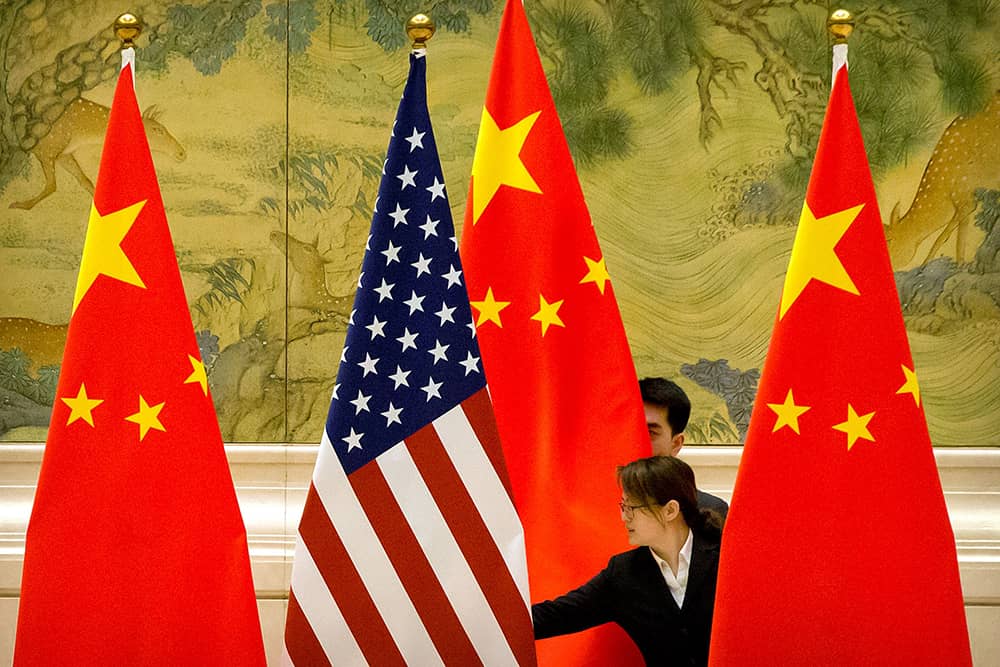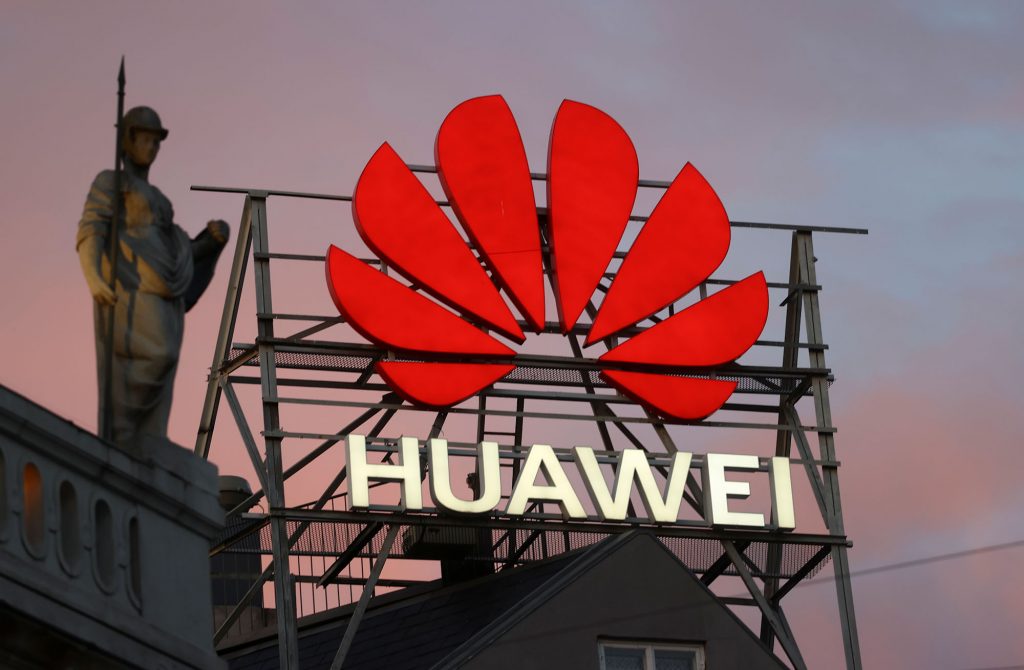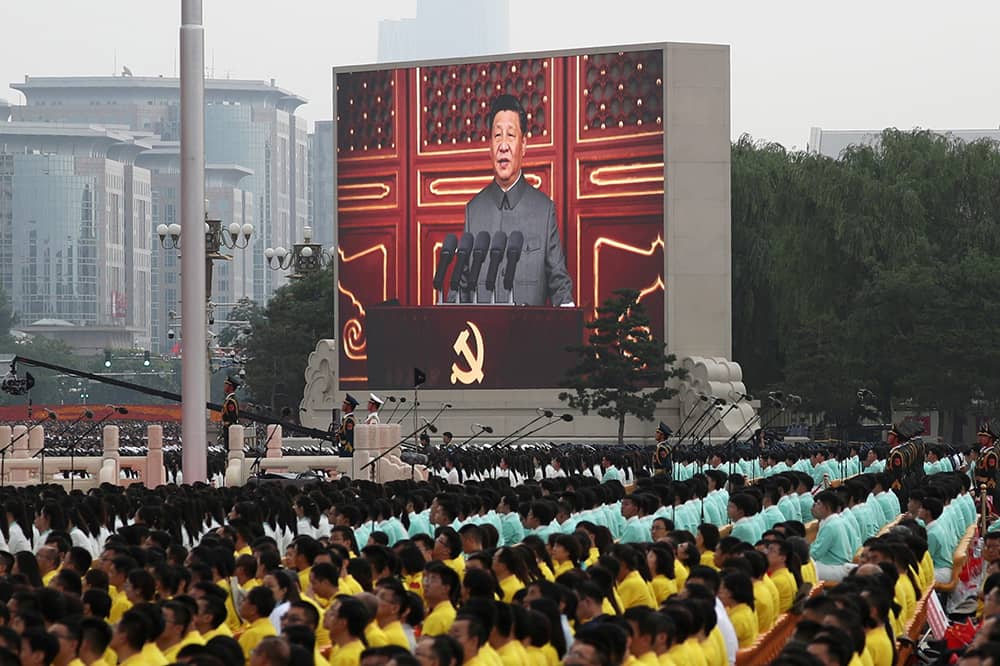The Biden administration recognizes that China is America’s foremost strategic challenger as well as a potential partner in some fields. It expects US–China competition will be sharpest around technological innovation. Much hinges on Beijing’s expectation that time is on China’s side. Central to the American response is coordination with allies and partners. Washington views such coordination as a competitive advantage, since Beijing lacks meaningful allies. Given the firm US–Israel bond, and the energy needs of the People’s Republic of China, Beijing is likely to look to others in the Middle East—Iran as well as Saudi Arabia.
In May 2020, Mike Pompeo, then secretary of state, flew to Israel, while under a COVID-19 lockdown, to consult on an urgent matter with Israeli leaders. Pompeo urged Prime Minister Benjamin Netanyahu to deny a Chinese bid to operate the Sorek B desalination plant, a $1.5 billion project that is expected to be the largest desalination plant in the world. The urgency of Pompeo’s appeal to Israel to exercise caution around Chinese involvement in its critical infrastructure reflected Washington’s growing concerns about China’s expanding influence around the world. The Trump administration similarly urged other allies to limit Chinese involvement in critical infrastructure, most visibly in the build-out of 5G telecommunications networks.
These efforts were informed by a view within the Trump administration that the United States and China were locked in a deep ideological and philosophical struggle. They viewed American and Chinese interests, values, and vision as being irreconcilably at odds. President Donald Trump and his staff sought to redress the US–China trade imbalance, including by the imposition of unilateral tariffs. Beijing reciprocated, launching tit-for-tat measures targeting specific American political constituencies. The COVID-19 outbreak intensified US–China antagonisms; both countries took turns accusing the other of being the source of the virus and of exercising negligence in response to its spread.
The Trump team took it as a given that American partners such as Israel sooner or later would need to pick sides. US concerns with intellectual property theft by China and its potential use of commercial platforms for intelligence collection played a role in this case and in others (such as the contract awarded to China to manage the Haifa harbor).
Enter the Biden Administration and ‘Extreme Competition’
The Biden administration has made several subtle shifts in America’s orientation toward China. At a conceptual level, the Biden administration seems to have accepted that the People’s Republic of China is not going away and that the Chinese Communist Party will likely govern it for the foreseeable future. Rather than framing China as a topmost challenge that eclipses other global concerns, the Biden administration has embedded China within a range of global concerns the US must address. While the Biden team views China as the top nation-state competitor the US confronts, it also recognizes that its relationship with China will cut across its ability to address other identified global priorities. China is a potential partner in addressing certain challenges, such as spurring global economic recovery, and a potential problem or challenge in other areas, such as renewing the appeal of democratic institutions and revitalizing ties with allies and partners.
President Joe Biden has characterized America’s relationship with China as an “extreme competition,” but he has refrained from characterizing China as an adversary or enemy, in contrast to the way he defined Russia publicly. Biden’s advisers previously have described the competition as a condition to be managed, rather than a problem with a near-term solution. They have called for “competition without catastrophe” with China. Other experts who remain in contact with Biden administration officials, such as Harvard University professor Joe Nye, similarly have urged Washington to approach its relationship with China as a “cooperative rivalry.”
The near-term focus of US policy in relation to China is on strengthening America’s relationships with allies and partners who can be arrayed against its rising power. National Security Advisor Jake Sullivan has explained that the more Washington and others can form a “chorus of voices” to push back against coercive Chinese behavior, the more they will be able to approach competition with China from positions of strength. These efforts have manifested in the first leaders’ meeting of the Quadrilateral Grouping of Australia, India, Japan, and the US; the first visits to the White House coming from leaders of Japan and the Republic of Korea; and the elevated focus of G7 and NATO leaders on China.
Sources of US–China competition
The crux of US–China competition is over which country’s social, economic, and political system will be capable of outperforming the other. Both Washington and Beijing believe their system holds inherent advantages over the other. Both sides recognize that prestige will be derived from performance and that the country that best succeeds at unlocking the talents of its people, innovating world-leading technologies, and offering solutions to global challenges will enjoy the pull of power in the international system.
Chinese leaders and media have sought to create a perception of momentum in their favor, with Xi Jinping declaring this January that “time and the situation are in our favor.” Chen Yixin, the powerful secretary general of the body overseeing China’s domestic security, also commented in January that “the rise of China is a major variable [in the world today]…the rise of the East and decline of the West has become a trend; changes of the international landscape are in our favor.”

A light show ahead of the 2021 China International Fair for Trade in Services, in Beijing. Photo credit: Oriental Image via Reuters Connect
Such declarations by Chinese leaders have activated an American response. President Biden has framed key domestic policy initiatives such as infrastructure as urgent and necessary to compete with China. A White House fact sheet on Biden’s American Jobs Plan explains that the purpose of the project is to “unify and mobilize the country to meet the great challenges of our time: the climate crisis and the ambitions of an autocratic China.”
In the months since the pronouncements by Chinese leaders about China’s rise and America’s relative decline, the US has administered over 300 million COVID-19 vaccines at home; the unemployment rate has dropped below 6%; the IMF has projected that the US will serve as the leading engine of global growth in 2021; President Biden has declared that the US will serve as the world’s “arsenal of vaccines”; and Washington has begun distributing 80 million vaccines worldwide. The American national resilience that was demonstrated during this period has frustrated Chinese narratives of American decline.
The conventional wisdom among the Biden administration is that China has grown more aggressive at home and abroad as it has amassed power and that Beijing will continue to quash dissent at home and push boundaries to advance its influence abroad until it runs up against resistance that compels it to alter course. The prescription, therefore, is to find ways to raise the costs of China’s continuing its current course until Beijing determines its interests are better served by recalibrating toward a more moderate and patient pursuit of its ambitions.
Is Time Indeed on China’s Side?
From Beijing’s perspective, the key variable determining the intensity of US–China rivalry is the narrowing gap in relative power—both economic and military—between both countries. Beijing expects Washington to become more determined to find ways to blunt China’s rise the more the gap in relative national power narrows between the two countries. Since Chinese leaders have declared that trends will flow in China’s favor, they do not expect the level of friction in the relationship with the US to diminish, and they do not believe that their moderation on issues of US concern would lead to reducing bilateral tensions. Consequently, from Beijing’s perspective, the proper policy response is to persist in the face of American pressure until China surpasses the US and causes Washington to accept China’s rise.
Both countries also have powerful domestic political incentives that will limit policy space for significantly ameliorating tensions in the coming year. President Biden, as well as President Xi, will benefit politically from keeping bilateral tensions elevated, because the bilateral competition provides political tailwind for the types of domestic initiatives both seek to advance. In the US, President Biden will not want to detract focus from his domestic reform agenda by being forced to defend decisions that could be construed as accommodating China. In China, President Xi will want to prevent external interference in Beijing’s tightly choreographed nationalistic narrative around symbolically significant events, including the 100th anniversary of the founding of the Chinese Communist Party in July 2021, the Beijing Winter Olympics in February 2022, and the 20th Party Congress in fall 2022, where leaders will be selected for the next five-year term to rule China.

Sino-U.S. trade negotiations in Beijing, in 2019. Photo credit: Mark Schiefelbein/Pool via REUTERS
In any case, not all indicators point toward China’s uninterrupted rise. Given the so-called “demographic cliff”—the emerging long-term impact of the one-child policy—China needs to move up the skilled labor scale as their work force grows older and becomes more middle class. At the same time, Chinese officials are struggling to spur productivity gains and advance reforms to an economic model that relies too heavily on investment and generates too much pollution relative to its national goals. This imperative, too, may be driving competition to some extent. In this respect, time is not on China’s side: They need to become a Japan-style high value-added production hub to sustain growth with a shrinking workforce.
US Views on China’s Role in the Middle East
China’s top priorities in the Middle East are to preserve uninterrupted access to energy and markets, to protect Chinese expatriates, and to avoid entanglements. As its Foreign Minister Wang Yi has highlighted, half of China’s crude oil imports come from the Middle East. Viewed through this light, China can be expected to prioritize relations with Saudi Arabia, Iran, and other oil-producing regional states, even as it seeks to carry out Thomas Jefferson’s foreign policy dictum in the region: “Peace, commerce, and friendship with all nations, entangling alliances with none.”
Caution will continue to guide Beijing’s overall approach to the Middle East. China will not conciliate between Shiite or Sunni, mediate between Saudi Arabia and Iran, act as an intermediary between Turks and Arabs, or offer much beyond symbolic gestures to resolve differences between Israel and Palestinians. While it will seek to draw favorable contrasts between its involvement in the region and America’s, much of these efforts will remain limited to the rhetorical and commercial realms.
Washington does not, as yet, see China as an active peer rival in the Middle East. Notwithstanding its one overseas military base in Djibouti, the focal point of China’s force posture is still much closer to the Chinese homeland. Moreover, the confidence of American officials in the strength of US–Israel bonds, even amid Israel’s growing economic relationship with China, will remain strong; China cannot offer an alternative to what America provides. China’s primary interests in the Middle East lie with parties other than Israel, and China’s top objectives in the region do not naturally align with Israel’s preferences.
Rising Scrutiny Around Technology Issues
As the US–China relationship settles into a new phase of hardening, long-term competition, the two countries will likely increase their focus on technology issues as the core of bilateral competition. The US and China both recognize that technological innovation provides windfall benefits, not just economically, but also in terms of rule-setting around emerging technologies and the prestige that derives from being the pacesetter. Leaders in both countries also see significant national security implications for whichever country outpaces the other in machine learning, quantum computing, life sciences, development of 5G and 6G telecommunications technologies, and military applications of artificial intelligence, among other examples.

For these reasons, the Americans are likely to increase their scrutiny of Chinese efforts to secure cooperation from Israeli entities for accelerating its own technological development. Washington could push for greater Israeli government oversight of private sector technology-related trade and investment decisions with China, in addition to continuing to express its residual concerns about the implications of Chinese management of port facilities in Haifa. Specifically, the US could register sensitivity around any sales of tools or technology that could improve Huawei’s competitiveness, enhance China’s capacity to repress its people, or aid in China’s military development.
A recent Executive Order, “Addressing the Threat from Securities Investments that Finance Certain Companies of the People’s Republic of China,” established that the US will halt American capital flowing into Chinese companies that “develop or use Chinese surveillance technology to facilitate repression or serious human rights abuses” inside and outside of China. President Biden has framed one of the priorities of his diplomatic agenda to ensure democratic values govern the use and development of AI-driven surveillance tools and “not the interests of autocrats.” There likely will be greater scrutiny of Chinese companies that produce such technologies and external partners that exchange with them.
Conclusion
Tensions between Washington and Beijing are unlikely to mellow in the near term. Both America and China’s national narratives are invested in the notion that they need to mobilize to outpace the other in long-term competition. The narratives of both also hold that the other side bears principal responsibility for the deterioration in bilateral relations. Policymakers in both countries appear more focused at this time on strengthening their own competitive position against the other than on resolving specific irritants in their relationship.
Washington likely will continue to assess that China is the champion only of its own interests in the Middle East, which will constrain China’s capacity to displace American influence in the region. At the same time, the American focus likely will become more tightly concentrated around technological issues, which increasingly are the core of US–China competition. Countries or companies that become perceived as aiding China’s advances in 5G build-out, military applications, or tools of repression likely will feel American pressure to reconsider the long-term costs and benefits of carrying such efforts forward.



